What's New
Displaying results 2721 - 2730 of 4914

Resource | Infographics,
Given the higher rates of acquisition seen across so-called key populations—members of highly burdened and underserved groups—it is critical to provide access to the research process such that they can participate and reap more immediate benefit of scientific progress. Greater efforts must be made to include key populations in this crucial process for the HIV prevention response to be truly impactful. Excerpted from Px Wire.
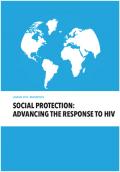
Resource | Publications,
The 10 case studies presented in this document clearly demonstrate that social protection works for HIV prevention, treatment, care and support. In particular, they show how social protection benefits the AIDS response through increased access to HIV services for all people including the most marginalized and excluded in society. The studies also demonstrate that carefully constructed and well-managed social protection programmes have the power to support people who are hardest to reach.
Resource | Publications,
HIV treatment is a cornerstone of the AIDS response, helping to prevent AIDS-related deaths and avert new infections. It also helps people living with HIV to live close-to-normal lifespans, thereby reducing HIV-related stigma. Evidence shows that HIV treatment, administered ideally as soon as possible after diagnosis, not only slows disease progression but also prevents onward HIV transmission. Moreover, the right to the highest attainable standard of health necessitates access to treatment and other medicines to ensure that people living with HIV can have long and productive lives.
Resource | Publications,
To reduce new HIV infections globally to fewer than 500 000 by 2020, a step towards ending the HIV epidemic as a public health threat by 2030, we need to Fast-Track the response, including renewed commitment to, sustained funding for and scaled-up implementation of HIV prevention programmes.
This paper discusses six elements of HIV prevention efforts that are crucial to achieve the target: commitment, focus, synergies, innovation, coverage and accountability.

Resource | Publications,
Preventing HIV Transmission in Intimate Partner Relationships: Evidence, strategies and approaches for addressing concentrated HIV epidemics in Asia provides evidence-based guidance to policymakers in Asia so that national HIV responses give appropriate priority to prevention efforts among key populations and their intimate partners, as well as those in serodiscordant relationships. Scaling up efforts to prevent intimate partner transmission of HIV will help countries to meet targets to halve sexual transmission of HIV, eliminate mother-to-child transmission, reduce AIDS-related maternal deaths, and address gender inequalities.
This report by UNDP, UNICEF and UNAIDS responds to data which shows that new infections in the long-running HIV epidemics in Asia, such as in Cambodia, China, India, Indonesia, Myanmar and Thailand, are on the increase among intimate partners of high risk populations. Reviewing the interplay of factors that affect sexual behaviours and decision making among key populations and people living with HIV, the report recommends strategies that need to be adopted by countries for a more comprehensive response to intimate partner transmission.
The report argues that efforts to address intimate partner transmission of HIV should concentrate on the interplay of factors that affect sexual behaviour and decision-making among key populations and people living with HIV who know their status, including how they negotiate safer sex and make contraceptive choices with their intimate partners.
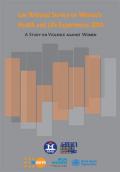
Resource | Publications,
There is growing recognition globally and also in Lao PDR that Violence against Women (VAW) is a serious public health problem and a violation of women's human rights. Yet in Lao PDR, VAW is culturally tolerated. According to the Lao Social Indicator Survey (LSIS) 2011-2012, 58% of women and 49% of men reported that VAW was justified if women did not adhere to traditional gender norms, roles and relations. However, this finding only sheds a small amount of light onto the true scale of the problem. Although small-scale studies have been undertaken on VAW, no comprehensive and extensive nationwide study has followed. Against this background, the National Study on Women's Health and Life Experiences 2014 was conducted to collect much needed evidence to develop an effective policy-making response to the issue.
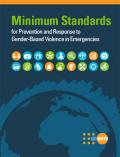
Resource | Publications,
Gender based violence is a life-threatening, global health and human rights issue that violates international human rights law and principles of gender equality. In emergencies, such as conflict or natural disasters, the risk of violence, exploitation and abuse is heightened, particularly for women and girls. UNFPA's "Minimum Standards for Prevention and Response to GBV in Emergencies (GBViE)" promote the safety and well being of women and girls in emergencies and provide practical guidance on how to mitigate and prevent gender-based violence in emergencies and facilitate access to multi-sector services for survivors.
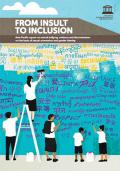
Resource | Publications,
"From Insult to Inclusion: Asia-Pacific report on school bullying, violence and discrimination on the basis of sexual orientation and gender identity” is the first comprehensive regional review to focus specifically on the issue of bullying based on sexual orientation and gender identity or expression (SOGIE). The report details the extent of the problem in Asia-Pacific, the devastating impact of this type of abuse, and the measures governments are taking and could take to address it.
The primary audience for this report is education policy-makers and other stakeholders responsible for child protection and human rights protections in Asia-Pacific. This includes, most importantly, ministries of education, but also ministries responsible for child welfare and development, health, and youth, as well as national human rights institutions. This includes both those working at the central level, as well as those at sub-national levels.
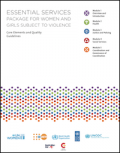
Resource | Publications,
The United Nations Joint Global Programme on Essential Services for Women and Girls Subject to Violence, a partnership by UN Women, UNFPA, WHO, UNDP and UNODC, aims to provide greater access to a coordinated set of essential and quality multi-sectoral services for all women and girls who have experienced gender based violence.
The Programme identifies the essential services to be provided by the health, social services, police and justice sectors as well as guidelines for the coordination of Essential Services and the governance of coordination processes and mechanisms. Service delivery guidelines for the core elements of each essential service have been identified to ensure the delivery of high quality services, particularly for low and middle income countries for women and girls experiencing violence. Taken together, these elements comprise the “Essential Services Package”.
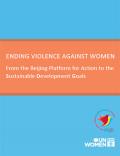
Resource | Publications,
The document provides a summary of the trends in national implementation of the Platform for Action, specifically in relation to one of the identified critical areas of concern, violence against women, as well as an overview of the role of UN Women in the 2030 Agenda for Sustainable Development, in particular, the development of the Sustainable Development Goals (SDGs) and SDG 5, "Achieve Gender Equality and Empower all Women and Girls."





